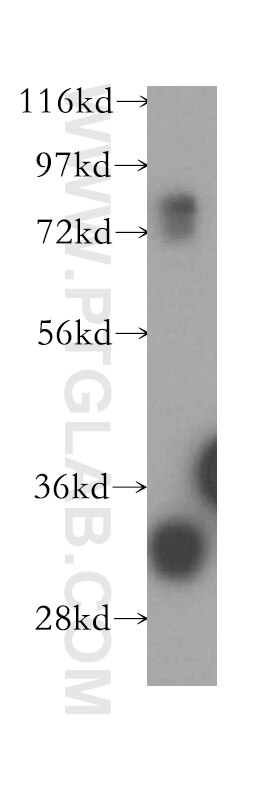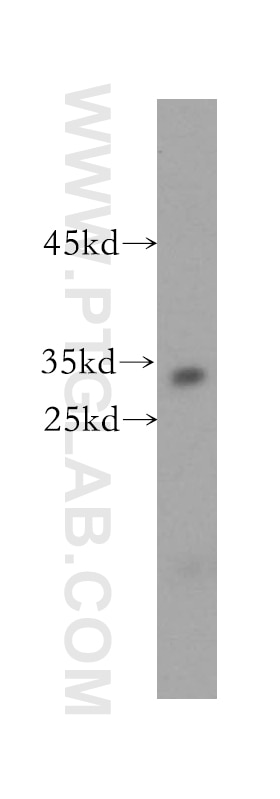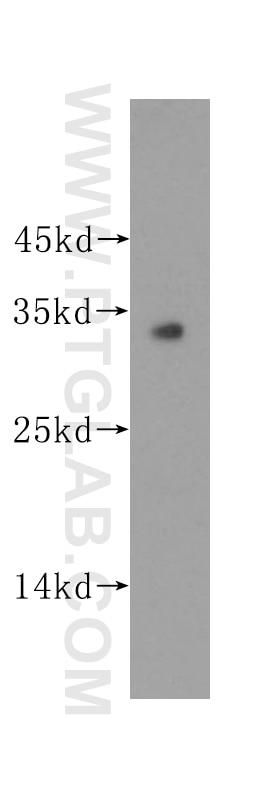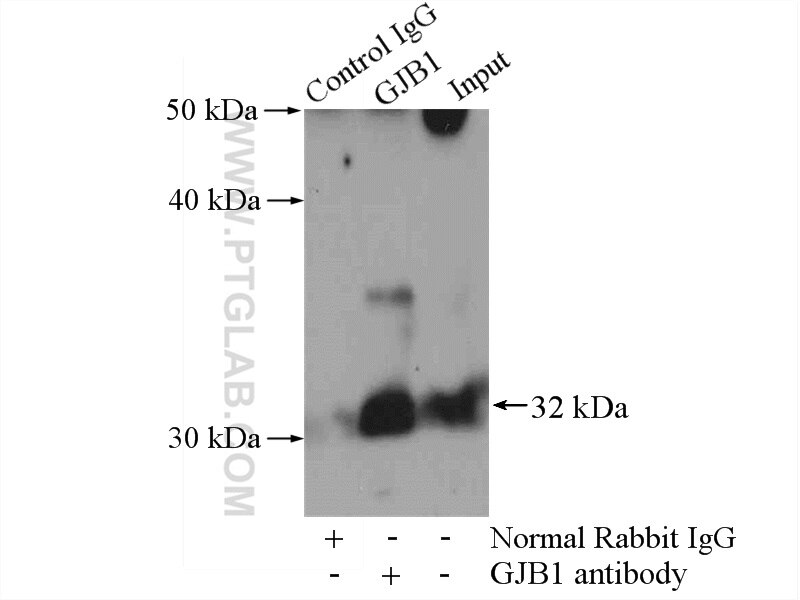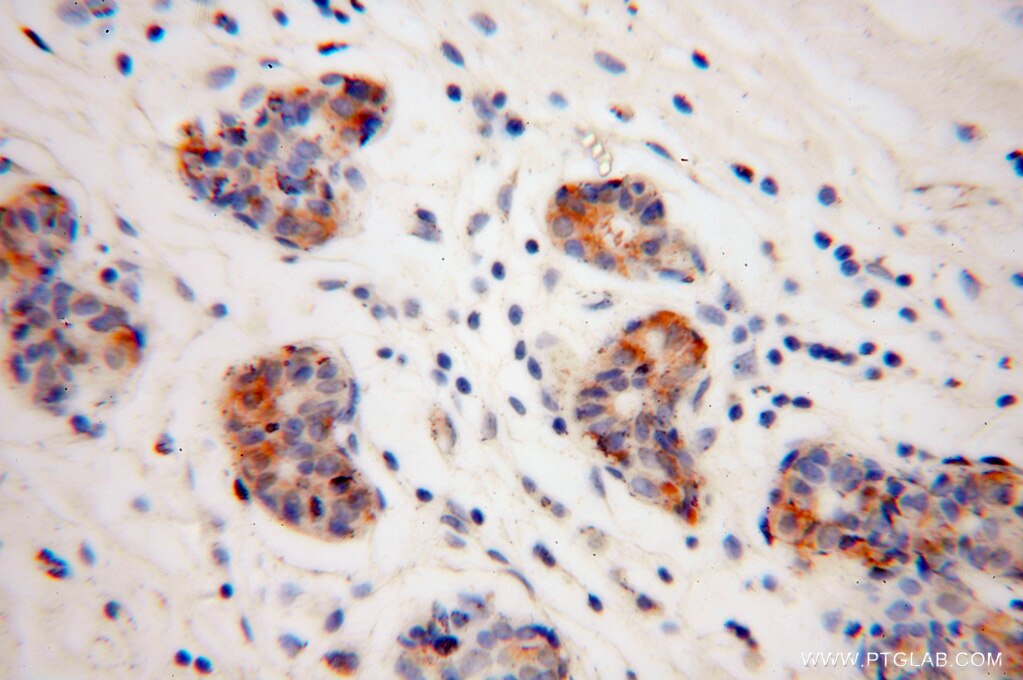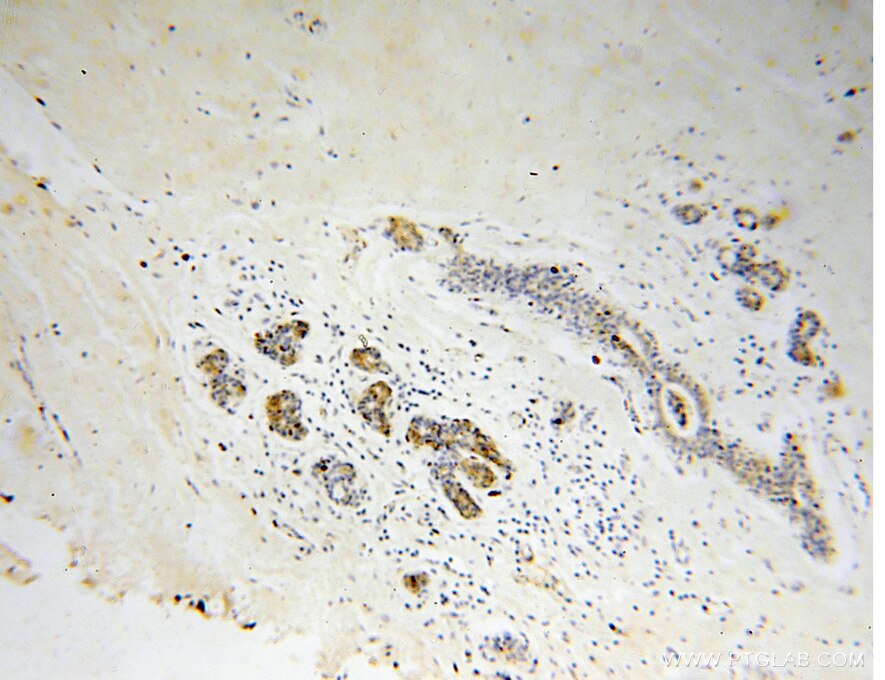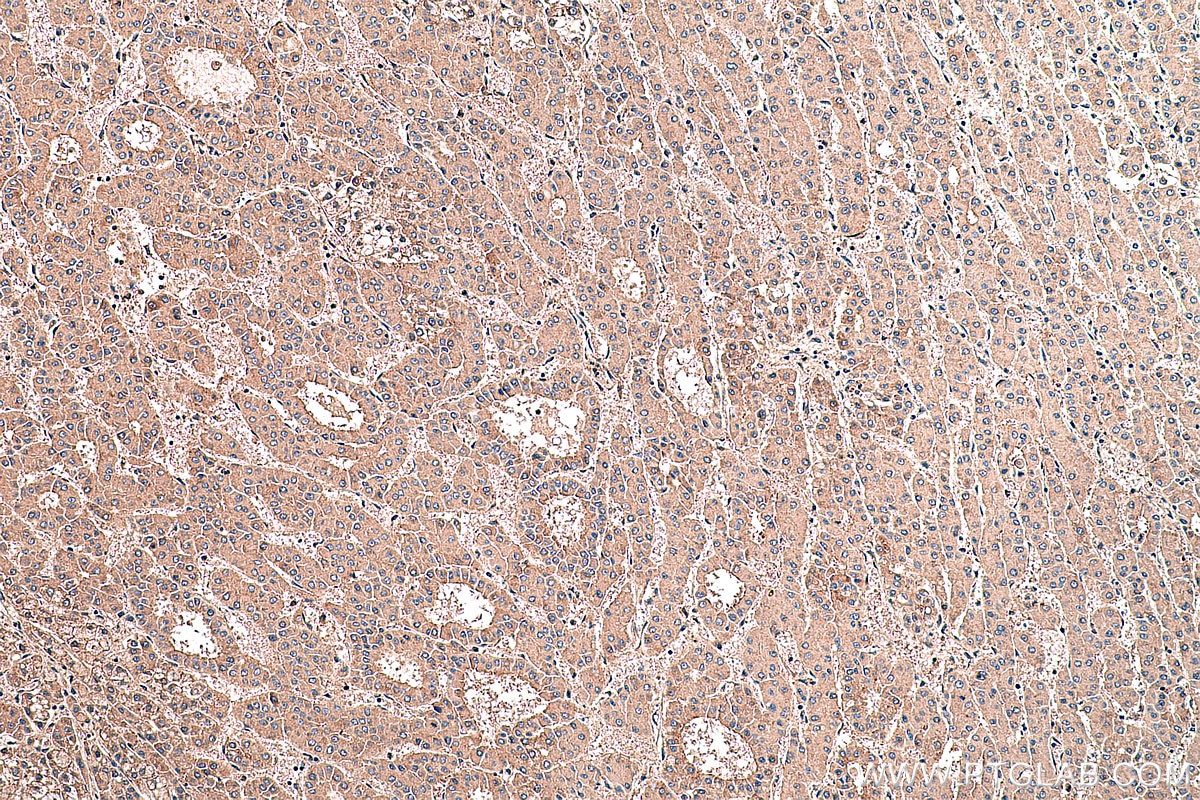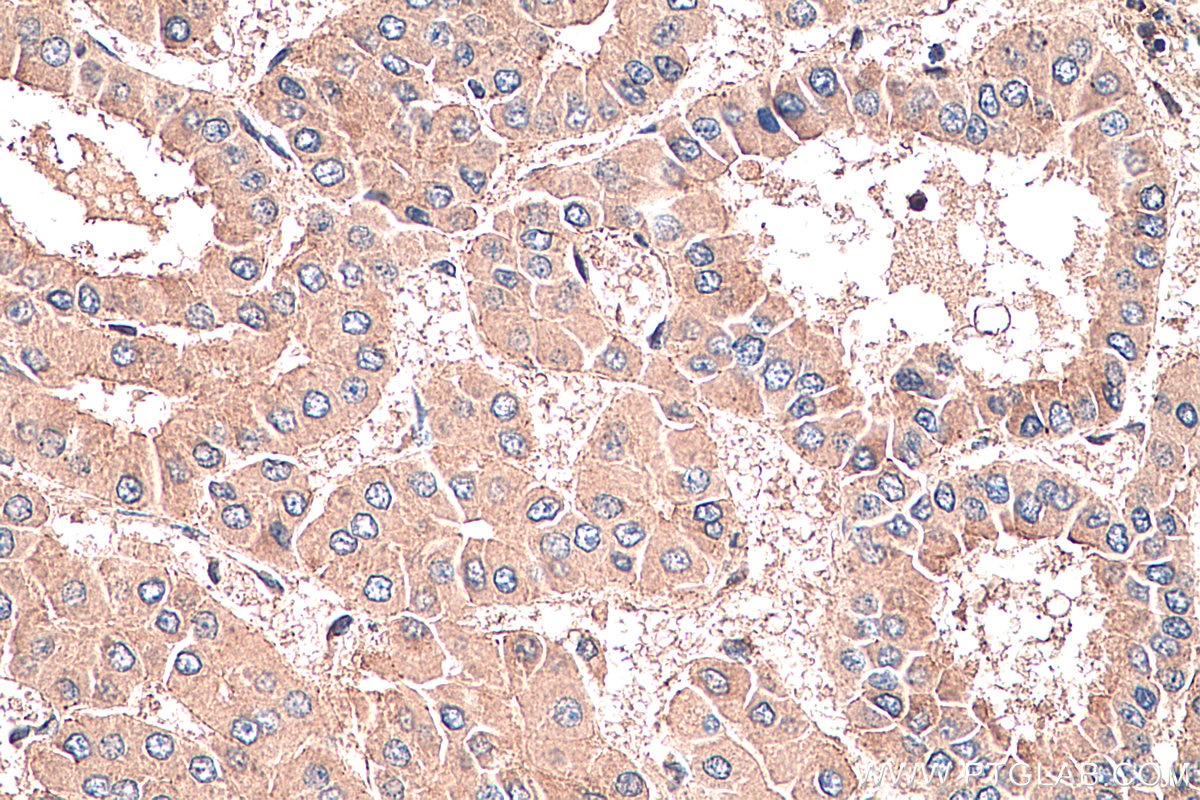Anticorps Polyclonal de lapin anti-Connexin 32
Connexin 32 Polyclonal Antibody for WB, IHC, IP, ELISA
Hôte / Isotype
Lapin / IgG
Réactivité testée
Humain, souris
Applications
WB, IHC, IF, IP, ELISA
Conjugaison
Non conjugué
N° de cat : 10450-1-AP
Synonymes
Galerie de données de validation
Applications testées
| Résultats positifs en WB | tissu cérébral de souris, cellules A375, tissu cutané de souris, tissu hépatique humain |
| Résultats positifs en IP | tissu cérébral de souris |
| Résultats positifs en IHC | tissu de cancer du foie humain, tissu de cancer du côlon humain il est suggéré de démasquer l'antigène avec un tampon de TE buffer pH 9.0; (*) À défaut, 'le démasquage de l'antigène peut être 'effectué avec un tampon citrate pH 6,0. |
Dilution recommandée
| Application | Dilution |
|---|---|
| Western Blot (WB) | WB : 1:200-1:1000 |
| Immunoprécipitation (IP) | IP : 0.5-4.0 ug for 1.0-3.0 mg of total protein lysate |
| Immunohistochimie (IHC) | IHC : 1:50-1:500 |
| It is recommended that this reagent should be titrated in each testing system to obtain optimal results. | |
| Sample-dependent, check data in validation data gallery | |
Applications publiées
| WB | See 5 publications below |
| IHC | See 2 publications below |
| IF | See 1 publications below |
Informations sur le produit
10450-1-AP cible Connexin 32 dans les applications de WB, IHC, IF, IP, ELISA et montre une réactivité avec des échantillons Humain, souris
| Réactivité | Humain, souris |
| Réactivité citée | Humain, souris |
| Hôte / Isotype | Lapin / IgG |
| Clonalité | Polyclonal |
| Type | Anticorps |
| Immunogène | Connexin 32 Protéine recombinante Ag0659 |
| Nom complet | gap junction protein, beta 1, 32kDa |
| Masse moléculaire calculée | 32 kDa |
| Poids moléculaire observé | 32 kDa |
| Numéro d’acquisition GenBank | BC002805 |
| Symbole du gène | Connexin-32 |
| Identification du gène (NCBI) | 2705 |
| Conjugaison | Non conjugué |
| Forme | Liquide |
| Méthode de purification | Purification par affinité contre l'antigène |
| Tampon de stockage | PBS with 0.02% sodium azide and 50% glycerol |
| Conditions de stockage | Stocker à -20°C. Stable pendant un an après l'expédition. L'aliquotage n'est pas nécessaire pour le stockage à -20oC Les 20ul contiennent 0,1% de BSA. |
Informations générales
Connexin 32 (Cx32), also known as Gap junction beta 1 protein (GJB1), belongs to the connexin family. Connexins are membrane-spanning proteins that assemble to form gap junction channels that facilitate the transfer of ions and small molecules between cells. Connexin 32 is the major gap junction protein of liver, and the expression is also found in the brain and other organs. It is involved in tumorigenesis and liver regeneration. Connexin 32 plays an important role in peripheral nerve. Defects in Connexin 32 are the cause of Charcot-Marie-Tooth disease X-linked type 1 (CMTX1), an inherited peripheral neuropathy. Connexin 32 protein can be detected as a 27-32 kDa monomer and a 48-54 kDa dimer (PMID: 8266101; 8613761; 8608591; 19265674; 17972320; 19845480)
Protocole
| Product Specific Protocols | |
|---|---|
| WB protocol for Connexin 32 antibody 10450-1-AP | Download protocol |
| IHC protocol for Connexin 32 antibody 10450-1-AP | Download protocol |
| IP protocol for Connexin 32 antibody 10450-1-AP | Download protocol |
| Standard Protocols | |
|---|---|
| Click here to view our Standard Protocols |
Publications
| Species | Application | Title |
|---|---|---|
World J Gastroenterol PBX1 attributes as a determinant of connexin 32 downregulation in Helicobacter pylori-related gastric carcinogenesis. | ||
Brain Res Bull Transient receptor potential vanilloid 4 is involved in the upregulation of connexin expression following pilocarpine-induced status epilepticus in mice. | ||
Histopathology Down-regulation of connexin43 and connexin32 in keratocystic odontogenic tumours: potential association with clinical features. | ||
Oncol Lett Effects of Helicobacter pylori on the expression levels of GATA-3 and connexin 32 and the GJIC function in gastric epithelial cells and their association by promoter analysis. |

